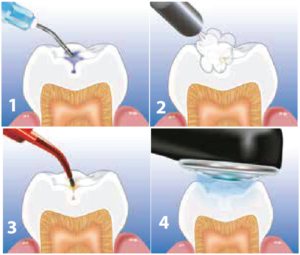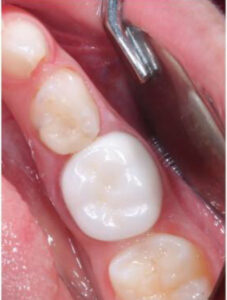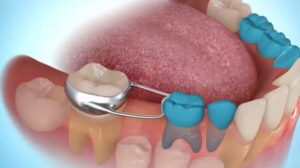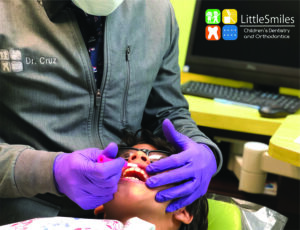Minimize dental treatment on your child with preventive care
May 30th, 2019
On average, students miss more than 51 million school hours each year because of dental problems or related conditions. Most of this lost time can be prevented by good oral hygiene and prevention. When brushing, flossing regularly and visiting their Pediatric Dentist every six months for a check-up, you are giving your child an upper hand in maintaining good oral health. This routine should be started early in life. Sometimes this is not enough and some dental treatments are needed. Even on baby teeth.
Baby teeth: the building block of a healthy beautiful smile
Sometimes, dental care is postponed after permanent teeth start coming in. This decision of waiting could be made by parents for many reasons. Financial should not be one. It has been known for children who had their first dental appointment after the age of four to have a higher cost for dental treatments, while children who had their first appointment before age four have a lower cost of dental treatments during eight years of follow-up.
Evidence increasingly suggests that to be successful in preventing caries, we must begin within the first years of life. If appropriate preventive measures are applied early—in infancy—it may be possible to raise a cavity-free child.
Preventive dental care facts to maintain a healthy smile
-
Brush your teeth at least twice a day
-
Floss your teeth at least once a day
-
Maintain a low Sugary or Starchy food or Drinks intake
-
Visit the dentist every 6 months for your children's cleanings and exams
-
Have dental X-rays taken
-
Use FLUORIDATED toothpaste
-
Get sealant treatments (as needed)
Baby teeth play such an important role in child development.
Sealants: how it can help prevent tooth decay on your child
Dental Sealant is a protective barrier placed on children's teeth intended to prevent tooth decay by "sealant out" plaque and food. While brushing and flossing are critical components of any dental health regimen, sealants provide additional protection for the grooved areas of the teeth. These areas are the most common place for a cavity to start. This is known as pit and fissure decay.
Dental or tooth sealants are a thin coat of resin that is applied on the surface of the teeth to prevent tooth decay. These sealants are generally applied on the surface of the molars or the back teeth. The coating is a uniform coating that covers small grooves and pits. This prevents the food particles from getting trapped in these pits and prevents tooth decay.
Sealants are more common on permanent teeth but they can be done on baby teeth. Baby teeth also have a number of grooves and pits that sometimes are necessary to be sealed to prevent tooth decay. Baby teeth play such an important role in child development. Also they help in holding the correct spacing for permanent teeth, it's important to keep these teeth healthy so they are not lost too early and result in problems with the growth of permanent teeth.

The simple process of dental sealants give your child a mighty smile
Application of sealant is a simple and painless process. It requires the teeth to be cleaned and dried. This is done by isolating the area from moisture, once the teeth are dried, a solution is applied to prepare the teeth to accept the resin. This solution rather makes the surface of the teeth a bit rough. This process is called tooth preparation. Rough surfaces provide an easy adhesive surface to the teeth for application of the resin. When the surface is ready, the sealant is place over the surface of the teeth. The resin hardens in a few seconds with a curing light. Now the sealant is in place on the top part of the tooth.
With sealant, the tooth is protected on the masticatory surface. Other areas of the teeth could still get decay. Brushing is still important after sealant placement! When cavities start in other areas, the only way to find them is with dental x-rays.
Dental x-rays: see the cavity before is too late
Parents will often ask why x-rays are recommend for their child even when he/she have a healthy and beautiful smile. There are many parts of a tooth and its supporting structures that are hidden by either close contacts or tissues. It is important, especially at a child’s initial dental visit, to utilize all available tools in order to gain an accurate picture of a child’s oral health.
Most x-rays are prescribed to identify or rule out the tricky cavities that can develop between the teeth and are not visible in the mouth. Other X-rays are recommended to ensure normal growth and development of forming teeth and supporting bone structures.
It is important to remember that once a baseline is established, parents should work with their pediatric dentist to determine which type and how often subsequent x-rays will need to be taken. At Little Smiles we use factors such as spacing, age, caries risk assessment, diet, oral hygiene and development concerns in order to make that decision.
Our ultimate goal is to be able to identify cavities when they are small or recognize developmental issues early before they cause extensive damage, create extra work, or have a damaging effect on a child’s oral health.
When areas of concern are found in the x-rays, we can focus on preventing these areas from developing tooth decay. If it is too late to prevent it from becoming a decay, some type of restorative or treatment is needed.
How restorative dentistry can help your child
Restorative dentistry is the treatment of dental decay of the teeth in order to restore or bring back to their best health. Restorative dentistry also includes the repair or replacement of damaged or defective teeth. Some of these treatments include:
- White fillings in a tooth or teeth
- Silver stainless steel or White (Zirconia) crown
- Pulpotomy, or treatment of the nerve
- Extractions (removing teeth)
- Space Maintainers
When are fillings required
A filling is used to fill in an area where a tooth decay (cavity) has been removed. Cavities that require a filling are usually not cavities with deep decay. The decayed tooth has to be removed or cleaned out with special dental instruments. Once the decay is removed and the inside of the tooth is cleaned, white filling called "composite" can be used to fill the area and restore the normal anatomy of the tooth.
When are Silver stainless steel or White (Zirconia) crowns needed?
When primary molars (baby teeth) that are not formed properly, have a lot of decay or fractures (cracks), or have undergone a nerve treatment, it may require a crown in order to cover the remaining tooth. Crowns are also used when a very wide or deep cavity has done so much damage to the tooth that it needs to be protected in order to save it.

Pulpotomy and what happens if not treated promptly
A pulpotomy, or nerve treatment is done when there is a large amount of decay (such as deep cavity), when there is pain in a tooth, or when the decay is very close to touching the pulp, or nerve, of the tooth. This prevents the tooth from developing an infection. If a tooth with a deep decay is not treated properly and promptly, your child could develop a serious infection or lose the tooth.
Extractions and when they are needed
A child might need an extraction (pulling a tooth) for several reasons. An extraction might be needed if your child has a severe infection or a very large cavity. Extractions may also be done if your child has spacing problems, such as crowding, or if space needs to be made for orthodontic care. If a tooth is lost early, the space will have to be preserved to allow the permanent tooth eruption.
Helping your child's permanent teeth eruption with space maintainers
When a baby tooth is lost early, of if a tooth never appears, a space maintainer is used to "save" a place for the permanent tooth (adult tooth). If the space is not maintained, the teeth on either side of the missing tooth can move and prevent the permanent tooth form from ever erupting (coming in). Also, without a space maintainer, teeth crowding can occur and be very difficult to treat. A space maintainer is made of stainless steel and is a passive appliance. Most of them do not require adjustments. Spacers are temporary and will be removed once a new tooth or teeth erupt, or the teeth around it become loose.

Summary:
Visiting the dentist regularly can help prevent cavities and reinforce good dental hygiene practices. At Little Smiles, we can guide your children to maintain an overall well-being with your preventive care. Some children have higher risk of decay and 100% cavity free is not possible. At Little Smiles, we are here to help you, and give your child the best oral health possible. If you need more information you can call to speak directly to us. We can help you give your child the beautiful smile they deserve.





 Summary:
Summary:




